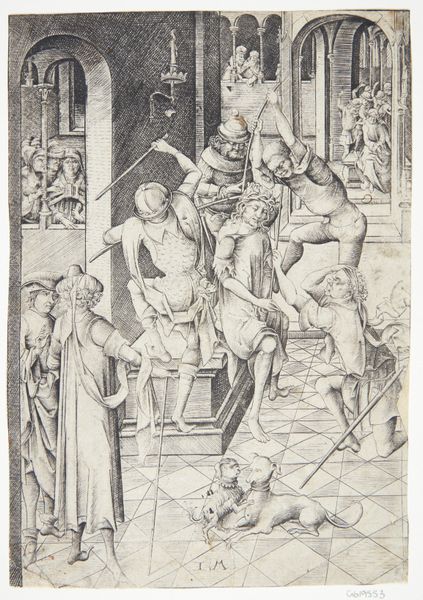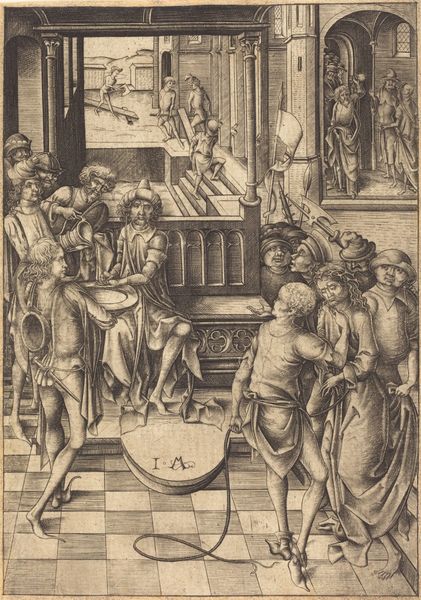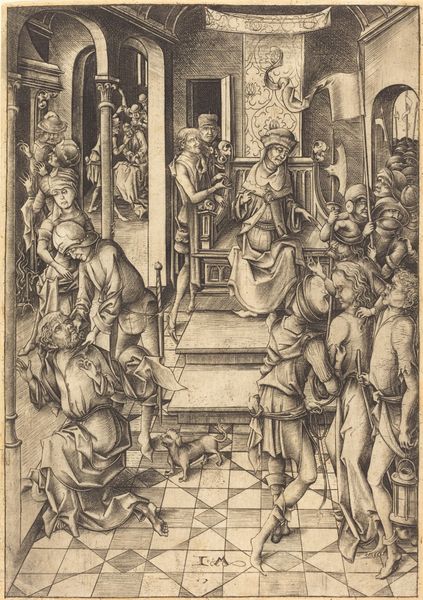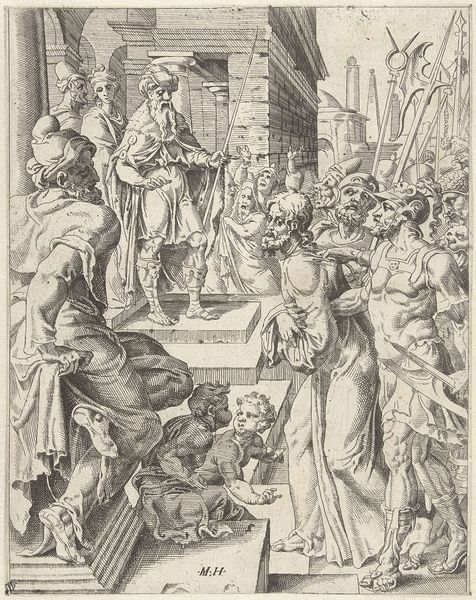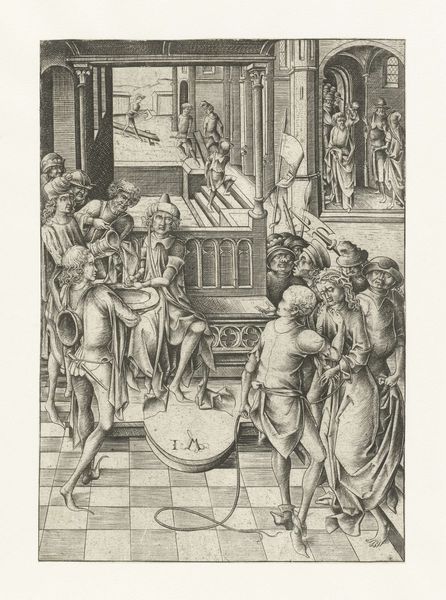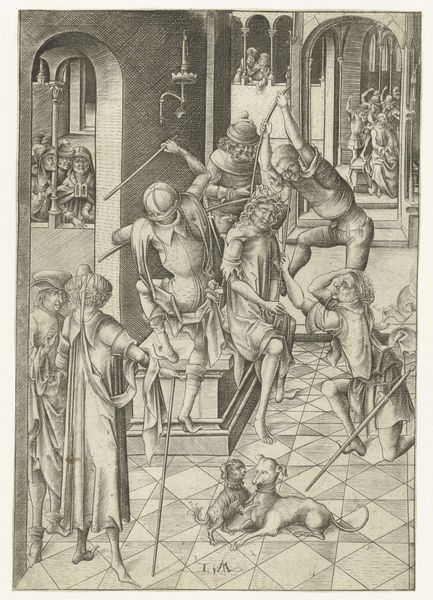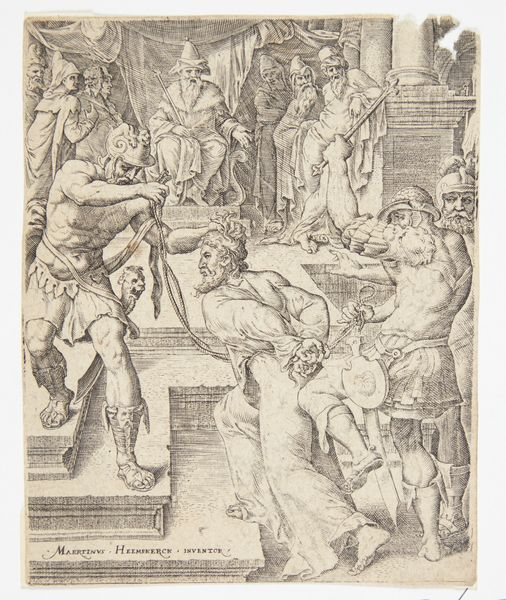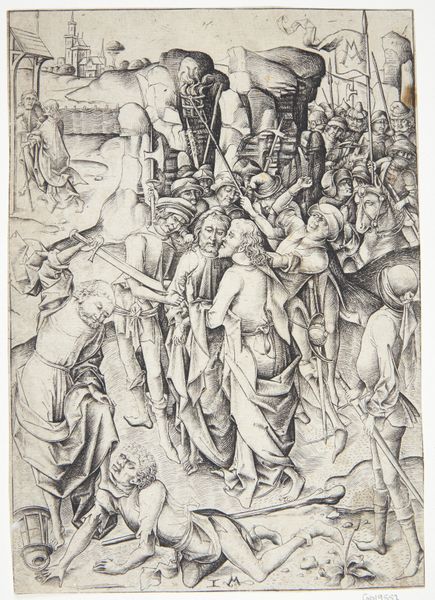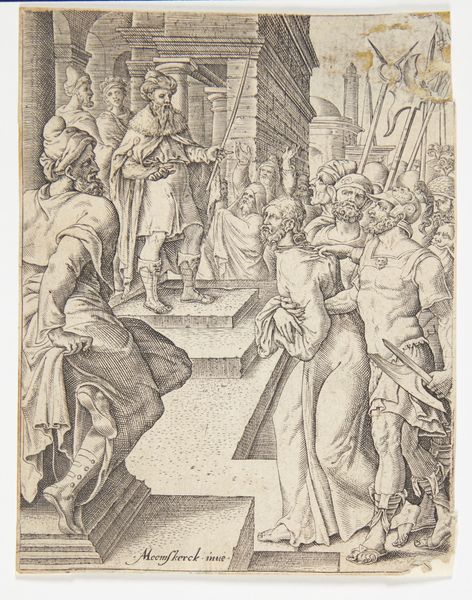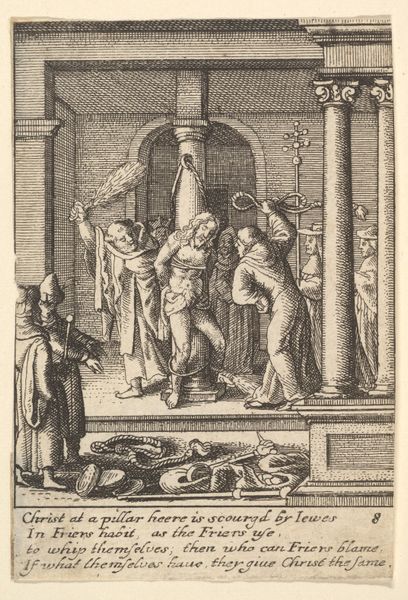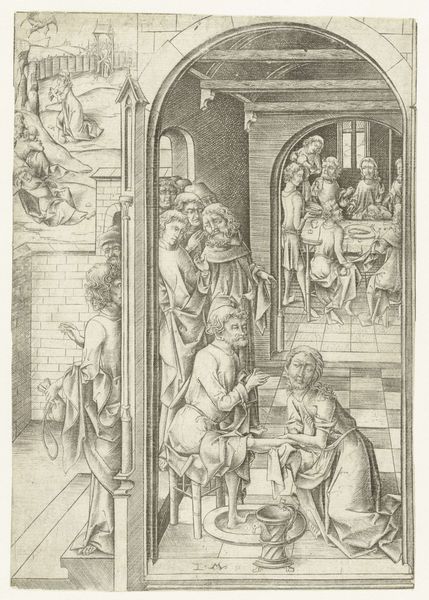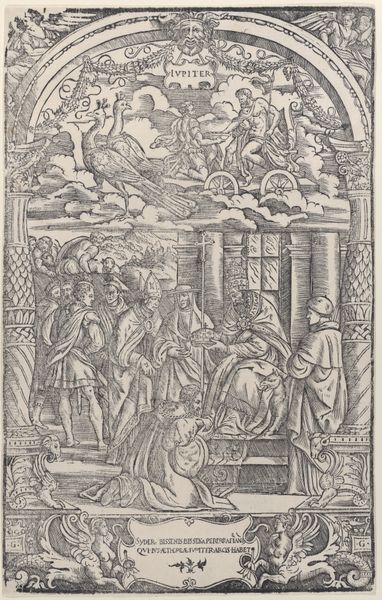
print, engraving
#
medieval
# print
#
figuration
#
history-painting
#
northern-renaissance
#
engraving
Dimensions: 205 mm (height) x 144 mm (width) (bladmaal)
Curator: Looking at this print by Israhel van Meckenem from sometime between 1440 and 1503, titled "Christ Before Pilate," the weight of the narrative is heavy. I immediately get a strong sense of dramatic irony, with Christ in one corner, being marched to his crucifixion, while in the foreground Pilate is washing his hands free of guilt. Editor: The artist's emphasis on Pilate's absolution resonates strongly today. We see echoes of this self-exoneration whenever those in positions of authority try to evade accountability, especially within hierarchical structures where marginalized people continue to suffer the consequences. The composition subtly but powerfully suggests that injustice has many actors. Curator: The print's composition guides us through a spatial narrative. Meckenem places Pilate centrally and at the forefront, deliberately highlighting his role. Surrounding this scene are the soldiers, jeering onlookers, and other episodes leading up to the Crucifixion, a sophisticated staging of unfolding events. The use of engraving also allows for incredibly detailed facial expressions. Editor: Yes, the crowd almost merges together as a singular body, demanding blood and projecting societal hypocrisy; note their various ages and attire. Then the artist seems to highlight that violence continues offstage and through time, drawing a direct line between these historical participants and modern institutions that allow systemic discrimination to thrive. Curator: Absolutely. And contextually, it is vital to view this engraving through the lens of its socio-religious background. As part of the Northern Renaissance, it represents a pivotal shift toward individualized depictions of religious figures. Prints such as these circulated widely and thus carried profound political and cultural implications. They facilitated widespread dissemination of specific religious narratives. Editor: By acknowledging its circulation during such times, we confront the challenging ways in which narratives, especially religious ones, can be exploited and weaponized throughout history. What this era called popular religiosity can very easily be used to promote nationalism, exceptionalism, and even racial discrimination—are these not also part of this print's story? Curator: It's interesting to consider how an artwork intended for devotional purposes can reflect such dark, ambiguous, power dynamics and ultimately serve as a starting point for grappling with pressing societal questions, even today. Editor: Indeed, by questioning our inherited histories and the motivations of their storytellers, we reclaim our own power in reshaping the narrative towards something that includes a wider range of humanity.
Comments
No comments
Be the first to comment and join the conversation on the ultimate creative platform.
